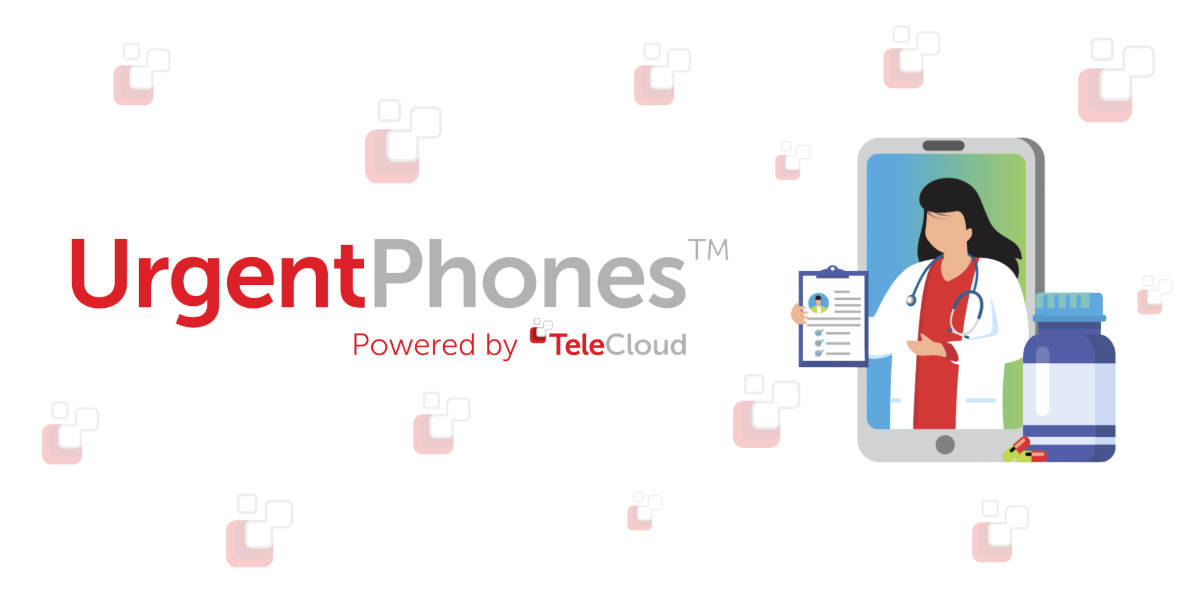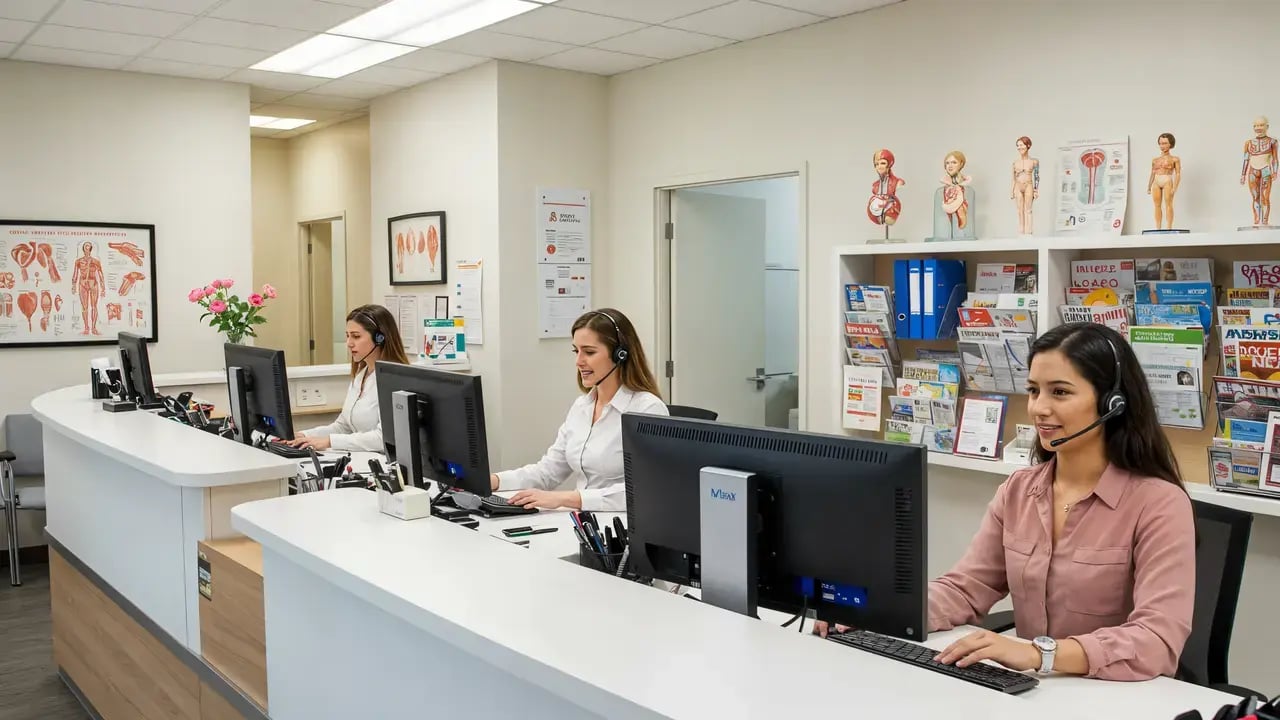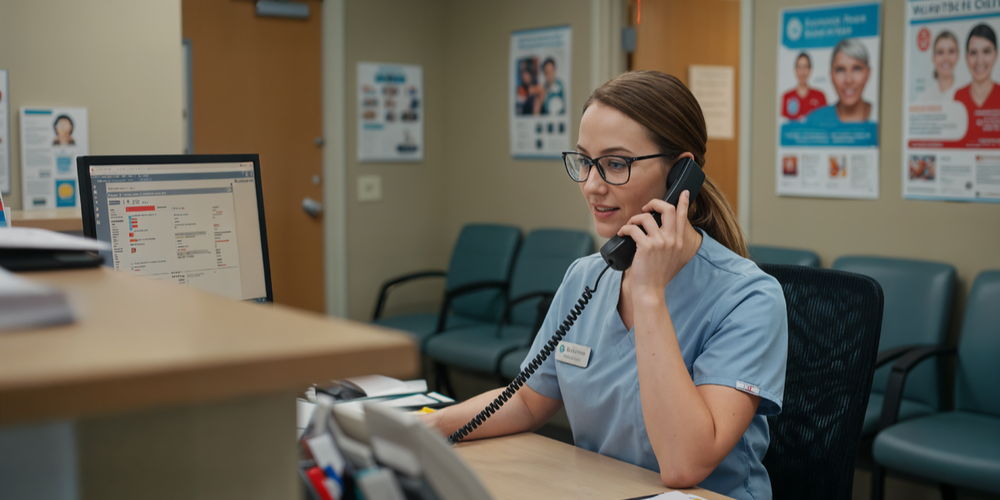Enhancing Efficiency & Collaboration in the Digital Age of Healthcare
Updated: December 18th, 2024 | Published: July 6th, 2023
3 min read

Efficiency and collaboration are the lifeblood of healthcare in the digital age. As technology advances, healthcare providers increasingly depend on innovative digital systems to streamline operations, foster collaboration, and improve patient care.
With the rise of cloud-based phone systems, VoIP technology, and advanced collaboration tools, healthcare organizations now have more opportunities than ever to optimize their workflows, enhance communication, and meet the demands of modern patient care.
But what are the essential tools healthcare providers need to achieve this? And how can these tools overcome common challenges in healthcare communication and collaboration? Let’s dive in.
Challenges in Healthcare Communication and Collaboration
Collaboration in healthcare is crucial—it’s what enables doctors, nurses, specialists, and support staff to work together to deliver high-quality care. Yet, the digital transformation of healthcare has brought new challenges to effective communication, including:
1. Fragmented Communication Systems
In many healthcare organizations, different departments still use separate systems, such as pagers, landlines, faxes, and email. These disconnected tools lead to delays, miscommunication, and sometimes even errors in patient care. Healthcare professionals waste valuable time connecting with others and sharing critical information.
2. Inefficient Workflows
Paper-based processes and outdated systems create bottlenecks. For instance, transferring patient records between departments or facilities can involve time-consuming manual work. These inefficiencies compromise collaboration, reduce productivity, and can ultimately impact patient satisfaction.
3. Patient-Provider Communication Barriers
Limited access to patient information and communication gaps hinder engagement. Patients may feel disconnected from their care plans, while providers may struggle to coordinate treatment. Clear, timely communication is essential for better health outcomes and patient trust.
To overcome these challenges, healthcare providers are turning to cloud-based communication tools that address these issues head-on.
Cloud-Based Phone Systems and VoIP: The Backbone of Healthcare Communication
1. Cloud-Based Phone Systems
Cloud-based phone systems have transformed the way healthcare providers handle communication. Here’s why:
- Accessibility and Mobility: Cloud-based systems allow healthcare staff to make and receive calls from anywhere using desktops, laptops, or mobile devices. Whether working on-site, remotely, or during rounds, professionals stay connected.
- Scalability: Need to add more lines or adjust call routing? Cloud systems scale easily as your organization grows, saving time and cost.
- Cost-Efficiency: Eliminating physical hardware and maintenance reduces overhead, allowing providers to focus more resources on patient care.
Example: A clinic using a cloud-based system can quickly route incoming calls to the right department or on-call physician, ensuring seamless communication even during emergencies.
2. VoIP Phone Systems
VoIP (Voice over Internet Protocol) systems are a game-changer for healthcare communication. By transmitting voice calls over the internet, VoIP offers crystal-clear quality, advanced features, and seamless integration with other healthcare tools, such as electronic health records (EHR).
- Enhanced Features: Video calls, voicemail-to-email, and team messaging create a unified communication platform.
- HIPAA Compliance: Secure VoIP systems prioritize patient privacy with encryption, data security, and compliance with healthcare regulations.
- Integration: VoIP connects with scheduling software, EHRs, and other collaboration tools, enabling faster and more informed decision-making.
Collaboration Tools Healthcare Providers Can’t Live Without
Beyond phone systems, advanced collaboration tools further enhance communication and efficiency in healthcare.
1. Secure Messaging
Secure messaging platforms allow real-time communication between healthcare professionals. Features like message priority, read receipts, and encryption make it easier to:
- Share patient information quickly.
- Coordinate treatment plans.
- Provide timely updates to the care team.
Example: A secure messaging platform can instantly notify a surgeon when lab results are ready, ensuring timely decisions.
2. Video Conferencing
Video conferencing breaks down geographical barriers and allows teams to collaborate effectively. Whether holding virtual case reviews or telemedicine appointments, video conferencing enables:
- Multidisciplinary team discussions.
- Remote consultations with specialists.
- Improved patient access to care, particularly in underserved areas.
3. Document Sharing
Collaborative document-sharing tools allow healthcare professionals to access and edit patient records, treatment plans, and test results in real time. Benefits include:
- Elimination of version control issues.
- Simultaneous updates by multiple team members.
- Better-informed decisions with the most up-to-date information.
Integration: The Key to Efficiency and Collaboration
While each tool is valuable on its own, integrating phone systems with collaboration platforms can revolutionize healthcare workflows.
1. Unified Platforms
Unified communication platforms combine voice calls, video conferencing, messaging, and document sharing into a single interface. This eliminates the need to juggle multiple tools, saving time and reducing errors.
2. Real-Time Communication
Integration allows healthcare professionals to switch between calls, video chats, and messaging seamlessly. For example, a physician can initiate a video consult with a specialist directly from a messaging app during a critical case.
3. Data Access
By integrating EHRs with communication tools, providers can access patient information instantly during consultations or team discussions. This ensures that decisions are based on accurate, up-to-date information, reducing delays and improving care coordination.
4. Telemedicine Capabilities
Integrated systems support telemedicine by combining patient scheduling, video consultations, and secure messaging. This enhances access to care and reduces unnecessary in-person visits.
The Future of Healthcare Communication is Digital
By adopting cloud-based phone systems, VoIP technology, and advanced collaboration tools, healthcare providers can overcome communication challenges, streamline workflows, and enhance patient care. These tools don’t just improve efficiency—they empower healthcare teams to deliver the highest standard of care in an increasingly digital world.
Ready to Revolutionize Your Healthcare Communications?
At TeleCloud, we specialize in cloud-based communication solutions designed to meet the unique needs of healthcare providers. From secure VoIP systems to integrated collaboration tools, we’ll help you create a seamless, efficient communication network that improves patient care.
Talk to a TeleCloud Expert Today and discover how technology can transform your healthcare practice.
vin@telecloud.net OR call/text 908-378-1218














